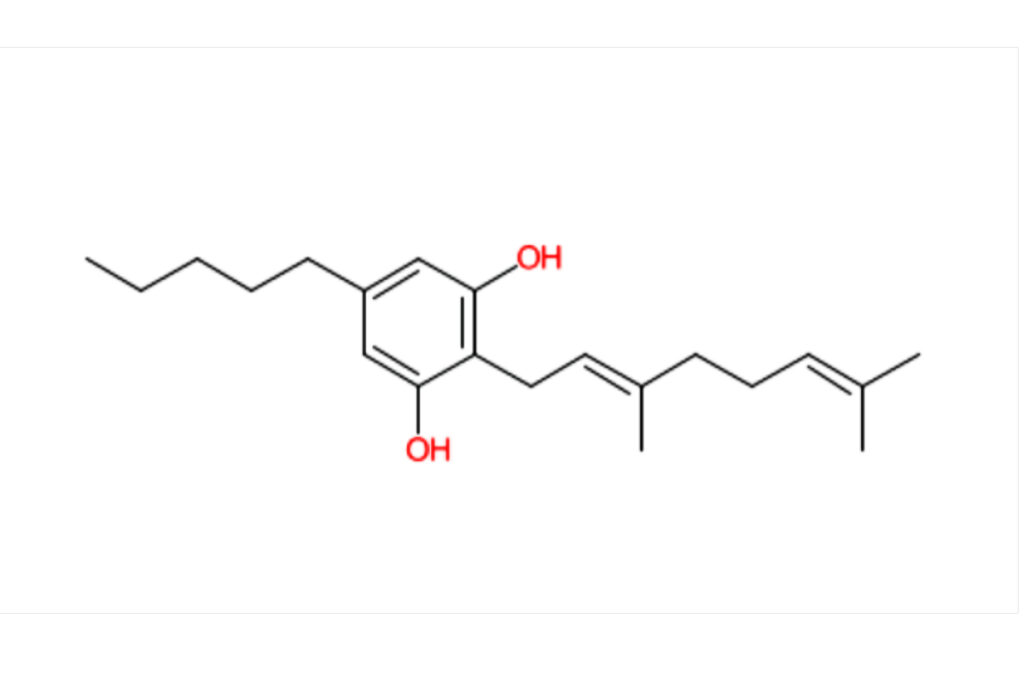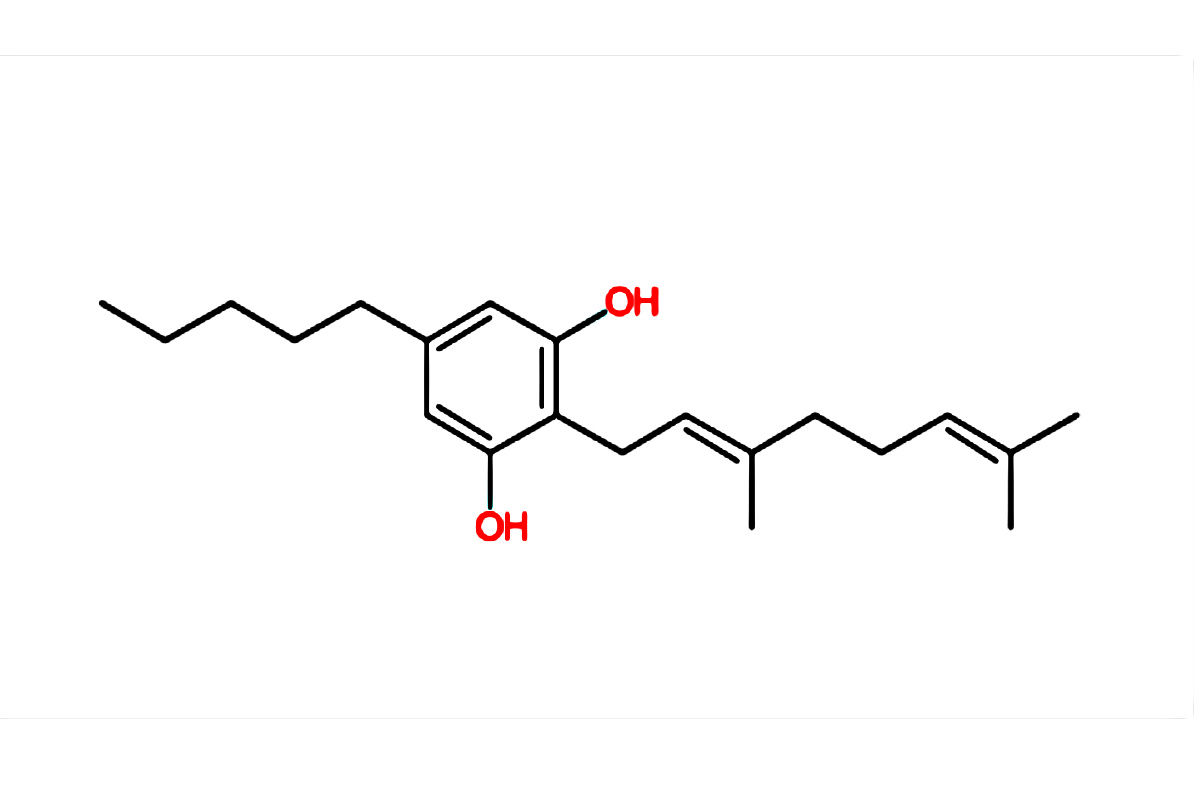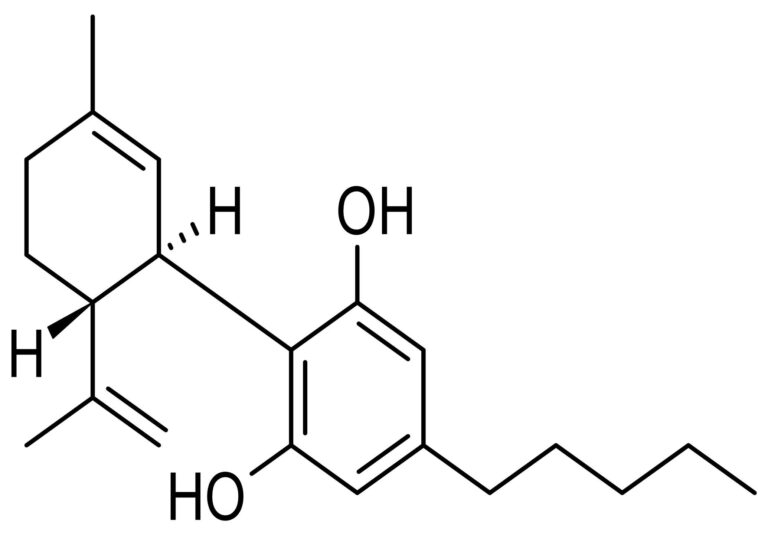Cannabigerol (CBG): A Comprehensive Overview
Introduction to CBG
Cannabigerol (CBG) is a cannabinoid derived from the cannabis plant, notably recognized for its non-psychotropic properties, meaning it does not produce the “high” typically associated with cannabis use.
CBG is one of over 100 cannabinoids found in cannabis, each with unique effects and potential therapeutic benefits. Unlike its more famous counterparts, THC (tetrahydrocannabinol) and CBD (cannabidiol), CBG is present in lower concentrations in most cannabis strains.

Definition and Background
CBG is considered a minor cannabinoid due to its lower presence in the cannabis plant. It is derived from cannabigerolic acid (CBGA), often referred to as the “mother of all cannabinoids.”
This is because CBGA is the precursor from which other major cannabinoids are synthesized through enzymatic processes as the plant matures. This unique role underscores the importance of CBG in the cannabis plant’s overall chemical makeup.
Significance in the Cannabis Plant
The significance of CBG in the cannabis plant extends beyond its role as a chemical precursor. Its presence, even in small quantities, contributes to the complex interplay of compounds that define the therapeutic and experiential profiles of cannabis strains.
Recent research has begun to uncover the distinctive properties of CBG, which include potential therapeutic benefits such as anti-inflammatory, neuroprotective, and antimicrobial effects.
Moreover, CBG’s low affinity for CB1 and CB2 receptors, the primary interaction points for cannabinoids within the human body’s endocannabinoid system, suggests it could offer health benefits without the psychoactive effects associated with THC. This makes CBG particularly appealing for medical research and applications where the therapeutic benefits of cannabinoids are desired without impairing cognitive functions.
In summary, CBG holds a foundational place in the cannabis plant’s biochemistry, serving as a critical precursor to other cannabinoids while also offering its unique potential for therapeutic use. Its growing recognition underscores the importance of exploring all components of the cannabis plant to fully understand and leverage its health benefits.
Chemical Nature and Biosynthesis
Chemical Structure of CBG
Cannabigerol (CBG) is a non-psychoactive cannabinoid found in the cannabis plant, which, like other cannabinoids, is derived from its acidic form through a process involving heat or ultraviolet light. Chemically, CBG is represented by the molecular formula C₂₁H₃₂O₂.
Its structure comprises a 21-carbon molecular scaffold, which is characteristic of other cannabinoids but differs in the way the atoms are arranged and how it interacts with the body’s endocannabinoid system. This unique structure underpins CBG’s distinct pharmacological properties.
In addition to Cannabigerol (CBG), other related compounds play important roles in the biosynthesis and structural diversity of cannabinoids. These include Cannabigerol monomethylether (CBGM), Cannabigerolic acid (CBGA), Cannabigerolic acid monomethylether (CBGAM), Cannabigerovarin (CBGV), and Cannabigerovarinic acid (CBGVA).
Further insights into the biosynthesis of cannabinoids have been provided by studies using 13C-labeled precursors (Fellermeier et al., 2001) and the identification of enzymes like tetrahydrocannabinolic acid synthase, responsible for the synthesis of the psychoactive compound THC (Sirikantaramas et al., 2005).
Understanding the chemical structures and biosynthetic pathways of these compounds can provide insights into the complex biochemistry of the cannabis plant and the potential therapeutic applications of these related cannabinoids.
Biosynthetic Pathway
The biosynthesis of CBG begins with the precursor cannabigerolic acid (CBGA), which is central to the production of the major cannabinoids found in cannabis.
The synthesis pathway starts with two key components: olivetolic acid and geranyl pyrophosphate. These two molecules undergo a condensation reaction catalyzed by the enzyme CBGA synthase, resulting in the formation of CBGA.
Role of CBGA (Cannabigerolic Acid)
CBGA plays a pivotal role in the cannabis plant’s cannabinoid production, acting as the “stem cell” for cannabinoids. It is the direct precursor for the three main cannabinoid lines: tetrahydrocannabinolic acid (THCA), cannabidiolic acid (CBDA), and cannabichromenic acid (CBCA).
The specific type of cannabinoid that CBGA converts into depends on the specific enzyme that catalyzes the reaction. CBGA itself is subject to its own transformation into CBG through decarboxylation, a process typically induced by heat.
Enzymatic Conversion to CBG
The conversion of CBGA to CBG involves the removal of a carboxyl group (-COOH) from CBGA, a reaction known as decarboxylation.
This process is typically facilitated by exposure to heat or ultraviolet light, either during the curing and drying process of cannabis or when cannabis is heated for consumption through smoking, vaporizing, or cooking. The enzyme responsible for this reaction works by breaking the bond between the carboxyl group and the cannabinoid acid, resulting in the release of carbon dioxide and the formation of CBG.
In essence, the biosynthesis and conversion of CBGA to CBG highlight the complex biochemistry of the cannabis plant, illustrating how various cannabinoids are produced and how they can be manipulated for medical and recreational purposes.
Understanding this pathway is crucial for the development of cannabis strains with specific cannabinoid profiles for targeted therapeutic effects. Majority of the 100 types of cannabinoids are metabolized in the liver by cytochrome.
Therapeutic Potentials of CBG
While the therapeutic potential of CBG has been the focus of extensive research, other related compounds, such as Cannabigerol monomethylether (CBGM), Cannabigerolic acid (CBGA), Cannabigerolic acid monomethylether (CBGAM), Cannabigerovarin (CBGV), and Cannabigerovarinic acid (CBGVA), may also exhibit unique therapeutic properties. Ongoing research is exploring the potential applications of these compounds in various medical conditions
CBG has been studied for its potential in cancer treatment, with research suggesting it can inhibit the growth of various cancer cell lines (Granja et al., 2012). Additionally, the neuroprotective and anti-inflammatory properties of CBG may offer benefits in the treatment of neuroinflammation associated with Alzheimer’s disease (Navarro et al., 2020)

Non-Psychotropic Properties
Cannabigerol (CBG) stands out among cannabinoids due to its non-psychotropic properties, meaning it does not produce the “high” associated with THC (tetrahydrocannabinol), the primary psychoactive component in cannabis. This characteristic makes CBG particularly appealing for medical research and therapeutic use, as it offers potential health benefits without impairing cognitive functions.
The non-psychoactive nature of CBG can be attributed to its interaction with the body’s endocannabinoid system (ECS). The ECS plays a crucial role in regulating a wide range of physiological and cognitive processes, including mood, pain sensation, appetite, and memory.
CBG interacts with the ECS differently compared to THC. While THC binds directly to CB1 receptors in the brain, producing psychoactive effects, CBG has a much lower affinity for these receptors. Instead, CBG is believed to interact with other non-cannabinoid receptors and channels in the body, which can influence various therapeutic outcomes.
The non-psychotropic properties of CBG offer several advantages for therapeutic applications:
- Safety and Tolerability: Without the psychoactive effects associated with THC, CBG can be used safely in a broader range of patients, including those for whom psychoactive effects are undesirable or contraindicated.
- Therapeutic Flexibility: CBG’s ability to provide therapeutic benefits without psychoactivity allows for more flexibility in dosing and administration, facilitating its use in treating various conditions without affecting the patient’s mental state.
- Broader Acceptance: The non-psychoactive nature of CBG may contribute to broader acceptance and adoption in medical contexts, where the psychoactive effects of cannabis have historically been a barrier to its medical use.
- Potential to Target Multiple Systems: CBG’s interactions with multiple receptor systems in the body suggest it could potentially offer a wide range of therapeutic effects, from inflammation and pain relief to neuroprotection and beyond.
Possible Medical Applications of CBG
Cannabigerol (CBG) has garnered attention for its wide array of potential medical applications. Its non-psychotropic nature, coupled with its interaction with various biological pathways, makes it a subject of interest for therapeutic uses. Below are some key medical applications and the benefits CBG may offer:
Analgesic Effects
CBG has been identified as a potential analgesic, offering pain relief without the psychoactive effects associated with THC. Studies suggest that CBG can influence the body’s pain signaling pathways, potentially making it effective in managing chronic pain conditions.
Its ability to alleviate pain could be particularly beneficial for patients seeking alternatives to traditional painkillers, which often come with significant side effects.
Anti-inflammatory Properties
One of the most promising aspects of CBG is its anti-inflammatory properties. Research indicates that CBG can reduce inflammation by acting on specific molecular targets involved in the inflammatory process. This anti-inflammatory effect makes CBG a potential treatment option for various inflammatory disorders, including inflammatory bowel disease (IBD), arthritis, and skin conditions like psoriasis.
Antioxidant Benefits
CBG also exhibits antioxidant properties, which can help protect the body against oxidative stress, a factor in many chronic diseases and aging. By neutralizing harmful free radicals, CBG could potentially play a role in preventing neurodegenerative diseases, cardiovascular diseases, and other conditions linked to oxidative stress.
Neuroprotective Actions
Emerging evidence suggests that CBG may have neuroprotective effects, offering protection against neurodegenerative diseases such as Alzheimer’s, Parkinson’s, and Huntington’s disease. CBG’s neuroprotective actions are believed to involve the modulation of neuroinflammatory pathways and the protection of neuronal health, highlighting its potential as a therapeutic agent in neurodegenerative disease management.
Antimicrobial Activities
CBG has demonstrated antimicrobial activity against various bacterial strains, including drug-resistant bacteria. This antimicrobial property makes CBG a potential candidate for developing new antibiotics at a time when antibiotic resistance poses a significant global health challenge.
Appetite Stimulation
Unlike THC, which is well-known for its appetite-stimulating effects, CBG has been shown to stimulate appetite without producing psychoactive effects. This characteristic makes CBG a potential therapeutic option for conditions associated with weight loss and poor appetite, such as cancer, HIV/AIDS, and other chronic illnesses.
Potential in Treating Diseases
CBG’s diverse pharmacological profile suggests it may have therapeutic potential across a range of diseases. Its interaction with various biological systems indicates promising avenues for treatment, especially in conditions where traditional treatments may fall short or lead to undesirable side effects.
Inflammatory Bowel Disease (IBD)
CBG has shown promise in the treatment of Inflammatory Bowel Disease (IBD), a term that encompasses conditions such as Crohn’s disease and ulcerative colitis. These conditions are characterized by chronic inflammation of the gastrointestinal tract, leading to pain, diarrhea, and weight loss.
Studies suggest that CBG can reduce inflammation in the gut and protect the nervous system, which can help alleviate the symptoms of IBD and improve the quality of life for patients.
A notable study conducted at the University of Naples in Italy investigated the effects of CBG on inflammatory bowel disease. In this study, CBG was administered to mice with experimentally induced colitis, and it significantly reduced inflammation and the formation of nitric oxide synthase, an enzyme associated with inflammatory processes (Borrelli et al., 2013).
Glaucoma
Glaucoma is a group of eye conditions that can lead to blindness by damaging the optic nerve, usually due to high pressure in the eye. CBG has been found to decrease intraocular pressure, making it a potential treatment option for glaucoma. Its vasodilator and neuroprotective properties may help protect the optic nerve and preserve vision.
Cancer
CBG has been studied for its potential in cancer treatment, with research suggesting it can inhibit the growth of various cancer cell lines, including breast, colon, and prostate cancer. Its ability to promote apoptosis (programmed cell death) in cancer cells while sparing healthy cells makes it a potential candidate for adjunctive treatment in cancer therapy. Further research is needed to understand its full potential and mechanisms of action in cancer treatment.
Neurodegenerative Diseases
The neuroprotective properties of CBG may offer benefits in the treatment of neurodegenerative diseases such as Alzheimer’s, Parkinson’s, and Huntington’s disease. By protecting neuronal health and modulating inflammation, CBG could potentially slow the progression of these diseases or alleviate some of their symptoms, such as cognitive decline and motor symptoms.
Bacterial Infections
With antibiotic resistance becoming a growing concern worldwide, CBG’s antimicrobial properties have garnered interest. Research has shown that CBG can combat bacterial strains that are resistant to traditional antibiotics, including MRSA (methicillin-resistant Staphylococcus aureus). This suggests CBG could be developed into a new class of antibacterial agents to help address the challenge of drug-resistant infections.
Real-World Examples of CBG’s Therapeutic Potential
Inflammatory Bowel Disease (IBD)
- Clinical Research Example: A notable study conducted at the University of Naples in Italy investigated the effects of CBG on inflammatory bowel disease. In this study, CBG was administered to mice with experimentally induced colitis, and it significantly reduced inflammation and the formation of nitric oxide synthase, an enzyme associated with inflammatory processes. This suggests that CBG could offer a novel treatment avenue for patients suffering from conditions like Crohn’s disease and ulcerative colitis.
Glaucoma
- Application in Eye Health: Research has highlighted CBG’s potential in treating glaucoma by reducing intraocular pressure. An example of its application could be the development of CBG-based eye drops designed to relieve the high intraocular pressure characteristic of glaucoma, thus helping to prevent optic nerve damage and potential vision loss. Although still in the exploratory phase, this application of CBG represents a significant step forward in ophthalmological treatments.
Cancer
- Preclinical Success Stories: A preclinical study demonstrated CBG’s ability to block receptors that cause cancer cell growth in mice with colorectal cancer, leading to the inhibition of cancer cell growth and disease progression. This breakthrough suggests that CBG could be part of targeted therapies for colorectal cancer, highlighting the cannabinoid’s potential as an adjunct treatment alongside traditional chemotherapy to improve outcomes and reduce side effects.
Neurodegenerative Diseases
- Potential in Parkinson’s and Alzheimer’s Disease: CBG’s neuroprotective properties are being explored in the context of neurodegenerative diseases such as Parkinson’s, Huntington’s disease and Alzheimer’s. For instance, a study might examine CBG’s ability to protect neural cells from damage and reduce the buildup of amyloid plaques, a hallmark of Alzheimer’s disease. This research could pave the way for CBG-based treatments that slow the progression of these debilitating conditions.
Bacterial Infections
- Fighting Drug-Resistant Bacteria: With antibiotic resistance on the rise, CBG’s antimicrobial properties offer hope for new treatment options. For example, researchers have discovered that CBG can combat strains of Staphylococcus aureus, including MRSA, which are resistant to several antibiotics. This discovery could lead to the development of CBG-enriched antibacterial creams or systemic treatments that provide an effective alternative to traditional antibiotics.
Pharmacology
CBG’s pharmacological profile is deeply intertwined with its interactions with the endocannabinoid system (ECS), a complex network of receptors and signaling molecules that play a key role in maintaining bodily homeostasis. Understanding CBG’s pharmacology offers insights into its therapeutic potential and mechanisms of action.
Interaction with the Endocannabinoid System
The ECS comprises two primary cannabinoid receptors: CB1, predominantly located in the central nervous system, and CB2, found mainly in the peripheral nervous system and immune cells. CBG interacts with the ECS in a manner distinct from THC and CBD, providing unique effects that contribute to its therapeutic potential.
CB1 and CB2 Receptor Activity
Unlike THC, which has a high affinity for CB1 receptors and produces psychoactive effects, CBG does not bind as strongly to CB1 receptors, contributing to its non-psychotropic nature. However, CBG does interact with CB2 receptors, which may account for its anti-inflammatory and pain-relieving properties, as CB2 receptor activation is known to mediate these effects.
Influence on Anandamide Levels
Anandamide is an endocannabinoid that plays a role in regulating mood, appetite, pain, and other functions. CBG has been shown to inhibit the uptake of anandamide, allowing it to remain in the bloodstream longer and potentially enhancing its positive effects on mood and pain.
In Silico Predictions and Receptor Interactions
In silico studies, which use computational models to predict molecular interactions, have provided valuable insights into how CBG might interact with various non-cannabinoid receptors. These studies help elucidate the broader pharmacological actions of CBG beyond its interactions with CB1 and CB2 receptors.
Alpha-2 Adrenergic Receptors
CBG has been predicted to interact with alpha-2 adrenergic receptors, which play a role in regulating neurotransmitter release. This interaction could explain some of CBG’s effects on pain and inflammation, as activation of these receptors can have analgesic and anti-i
CBG Shows Anti-Inflammatory Effects
5HT1A Receptor Antagonism for 5HT1A receptors, which are involved in serotonin neurotransmission. This interaction suggests CBG could have antidepressant and anxiolytic effects by modulating serotonin levels in the brain. The antagonism of the 5HT1A receptor by CBG could lead to increased serotonin availability, potentially improving mood and anxiety symptoms.
Analytical and Quality Control
As interest in the therapeutic potential of cannabigerol (CBG) grows, so does the need for reliable analytical methods and strict quality control measures. Ensuring the accurate detection and quantification of CBG in cannabis products is essential for both research and consumer safety.
HPLC and GC-MS Techniques
- High-Performance Liquid Chromatography (HPLC): HPLC is widely used for detecting and quantifying cannabinoids, including CBG, due to its accuracy, reliability, and versatility. This technique separates cannabinoids in a sample and measures their concentrations, allowing for precise quantification of CBG. HPLC is particularly favored for its ability to analyze non-volatile compounds and its suitability for complex cannabis matrices.
- Gas Chromatography-Mass Spectrometry (GC-MS): GC-MS combines the features of gas chromatography (GC) and mass spectrometry (MS) to identify different substances within a test sample. While GC-MS is highly effective for volatile compounds and offers excellent sensitivity and specificity, it requires the decarboxylation of cannabinoid acids before analysis, potentially altering the cannabinoid profile.
Challenges in Analysis and Quality Assurance
Analyzing cannabinoids, including CBG, presents several challenges:
- Complexity of Cannabis Matrix: The complex mixture of cannabinoids, terpenes, and other compounds in cannabis can complicate the analysis, requiring sophisticated methods to accurately identify and quantify CBG.
- Decarboxylation and Stability: Ensuring the stability of CBG during sample preparation and analysis is crucial, as decarboxylation and degradation can affect the accuracy of quantification.
- Variability Between Samples: Genetic and environmental factors can lead to significant variability in cannabinoid content between cannabis plants and even within different parts of the same plant, complicating standardization efforts.
Standardization of CBG-Enriched Cannabis Extracts
Standardization is paramount for the development and use of CBG-enriched cannabis extracts, both for therapeutic purposes and consumer products. This involves:
- Establishing Reference Standards: Reliable reference standards for CBG are necessary for accurate analytical measurements, allowing for consistency and comparability across studies and products.
- Quality Control Protocols: Implementing rigorous quality control protocols ensures that CBG-enriched products are safe, consistent, and effective. This includes regular testing for cannabinoid profiles, contaminants, and adherence to production standards.
- Regulatory Compliance: Navigating the regulatory landscape is crucial for the legal production and distribution of CBG products. Compliance with local and international regulations ensures that products meet legal requirements for safety and quality.
Research Trends and Future Directions
The exploration of cannabigerol (CBG) within the scientific community and its emerging applications in therapeutics are subjects of increasing interest. This section outlines the current research trends, future directions, and the evolving landscape of regulatory and legal considerations for CBG.
Bibliometric Overview of CBG Research
A bibliometric analysis reveals a growing body of literature on CBG, underscoring its rising prominence in cannabinoid research. Initial studies primarily focused on the chemical characterization and biosynthesis of CBG within the cannabis plant.
More recent investigations have expanded to explore its pharmacological properties and potential therapeutic applications. This shift is indicative of the broadening interest in CBG’s medical and scientific relevance, with an increasing number of publications each year.
Emerging Studies and Clinical Trials
Emerging studies and clinical trials are beginning to shed light on CBG’s therapeutic potential for a variety of conditions, including inflammatory bowel disease, glaucoma, neurodegenerative diseases, and cancer.
Preliminary findings suggest CBG may offer anti-inflammatory, neuroprotective, and anticancer benefits, among others. Despite the promising results from preclinical studies, clinical trials involving human participants remain limited but are gradually increasing, signifying a crucial step toward understanding CBG’s efficacy and safety in therapeutic applications.
Future Therapeutic Applications
The potential for CBG in future therapeutic applications is vast. Its non-psychotropic nature makes it an appealing candidate for treatments where the psychoactive effects of THC are undesirable.
Areas of interest for future research include its use as an antibacterial agent, particularly against antibiotic-resistant bacteria, and its application in treating metabolic syndrome, due to its interaction with various receptors beyond the endocannabinoid system. Additionally, the appetite-stimulating properties of CBG without the psychoactive effects present an area ripe for exploration, especially for patients undergoing chemotherapy or those with HIV/AIDS.
Regulatory Perspectives and Legal Status
The regulatory landscape and legal status of CBG are evolving as interest in its therapeutic potential grows. In regions where cannabis is legalized for medical or recreational use, CBG is generally subject to the same regulations as other cannabinoids. However, the legal status of CBG can vary significantly from one jurisdiction to another, influenced by factors such as the source of CBG (hemp vs. marijuana) and the presence of other cannabinoids, especially THC, in the product.
Regulatory bodies are beginning to recognize the need for specific guidelines to ensure the safety, quality, and efficacy of CBG products. This includes establishing standards for cultivation, extraction, and production processes, as well as for labeling, marketing, and distribution. As research into CBG and its applications continues to expand, it is likely that regulatory frameworks will be updated to reflect new findings and to facilitate the safe integration of CBG products into the market.
Citations
Fellermeier, M., Eisenreich, W., Bacher, A., & Zenk, M. H. (2001). Biosynthesis of cannabinoids. Incorporation studies with 13C-labeled glucoses. European Journal of Biochemistry, 268(6), 1596-1604. https://doi.org/10.1046/j.1432-1327.2001.02030.x
Sirikantaramas, S., Taura, F., Tanaka, Y., Ishikawa, Y., Morimoto, S., & Shoyama, Y. (2005). Tetrahydrocannabinolic acid synthase, the enzyme controlling the psychoactivity of cannabis sativa. Journal of Biological Chemistry, 280(1), 885-896. https://doi.org/10.1074/jbc.M411708200
Granja, A. G., Carrillo-Salinas, F., Pagani, A., Gómez-Cañas, M., Negri, R., Navarrete, C., … & Buffoni, F. (2012). A walk through cannabinoid potentials in cancer therapy: from bench to clinical trials. BioMed Research International, 2012, 195782. https://doi.org/10.1155/2012/195782
Navarro, G., Varani, K., Lillo, A., Vincenzi, F., Rivas-Santibanez, N., Ferrario, A., … & Finazzi-Agrò, E. (2020). Therapeutic potentials of cannabinoids in the treatment of neuroinflammation associated with Alzheimer’s disease. Molecules, 25(16), 3647. https://doi.org/10.3390/molecules25163647
Borrelli, F., Fasolino, I., Romano, B., Capasso, R., Maiello, F., Coppola, D., … & Izzo, A. A. (2013). Beneficial effect of the non-psychotropic plant cannabinoid cannabigerol on experimental inflammatory bowel disease. Biochemical Pharmacology, 85(9), 1306-1316. https://doi.org/10.1016/j.bcp.2013.01.017


